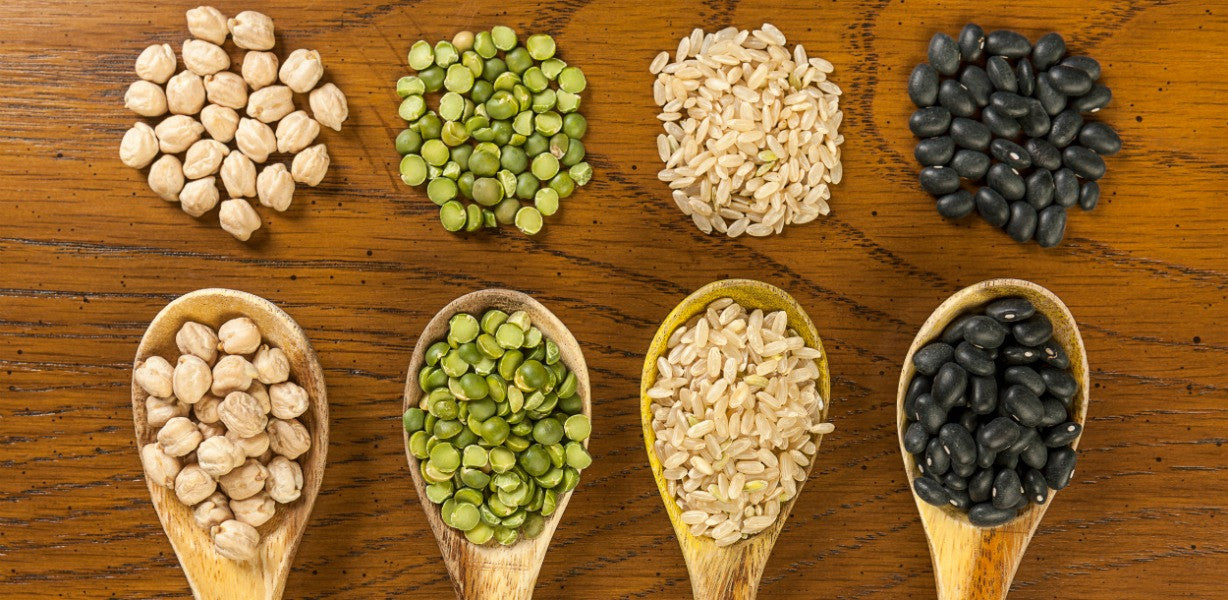
Most people know just how important protein is when it comes to our diets, especially if you lead an active lifestyle. And when many people think of protein, it conjures up images of steak and fish. If you are vegan or vegetarian, you have probably had many people ask you how you get enough protein. In any case, protein can easily be obtained from plant based diets and those that prefer to cut their meat consumption as well. Here is a short intro to plant based proteins.
‘Complete Proteins’ are a Thing of the Past
The old school of thought was once that you had to pair certain plant based foods together to get a ‘complete protein’. This isn’t as important as it was once believed to be. In fact, if you eat enough higher protein foods, your body makes up for the completed protein. Don’t stress out about pairing foods together!
Some High Protein Plant Based Foods
Protein in plants is often found in surprising places and in some cases, there are more grams of protein per serving in plants than in meat for size. Here are 5 very high protein plants to try in your high protein diet:
Organic Edamame 18g per 1 Cup cooked
Lentils 12-15g per ½ Cup cooked
Quinoa 14g per ½ Cup cooked
Almonds 8g per ¼ Cup serving
Broccoli 8g per 1 Cup cooked
Now, the question is, how do you add extra protein to your diet when you are eating a plant based one and you are also eating high protein? That’s almost easier to do than if you are eating animal based proteins!
Easy Ways to Get Enough Plant Based Protein
So many plant based proteins are great to throw in other foods. I like to add flax meal (with 4g of protein per 2 tbsp.) to salad dressings, soups, and smoothies. You can also try these suggestions for an extra plant based protein punch:
Peanut butter in your smoothies (+ 8g per serving)
Bake with almond flour. It has 6g of protein per serving.
Try some high protein sides such as quinoa, lentils and beans with a tofu dish, or even a meat dish, instead of a carb side for double the protein.
Use plant based soy drinks to make ice cream or smoothies at home. It has just as much protein as cow’s milk and no saturated fat.
Add something extra to salads with protein based toppings like quinoa. I like to season mine while it cooks, cool it down and add it to green salads. It adds a great layer of flavor. Plus, quinoa has 14g of protein per serving!
Many plant based proteins are super portable. Take a handful of nuts or seeds with you for mid-afternoon snacks.
Another way to add protein is with nutritional yeast. It is vegan/vegetarian and has a nutty/cheesy taste. Sprinkle it on salads, in soups and my favorite way, on popcorn.
There are also plant based protein powders out there. Most of the time, they are made of soy or pea protein. These work great for adding a boost to baked goods, drinks and more!
As you can see, there are a lot of options to get protein in a plant based way. To compare, a deck of cards size (4 oz.) chicken breast has 25g of protein. It is very easy to get enough protein based on plant based eating, especially when you combine foods like quinoa and tofu (which has about 20g of protein per serving).
Thanks for reading! Use code: PLANT10 for 10% off your next purchase!
Read more by Christine here.

